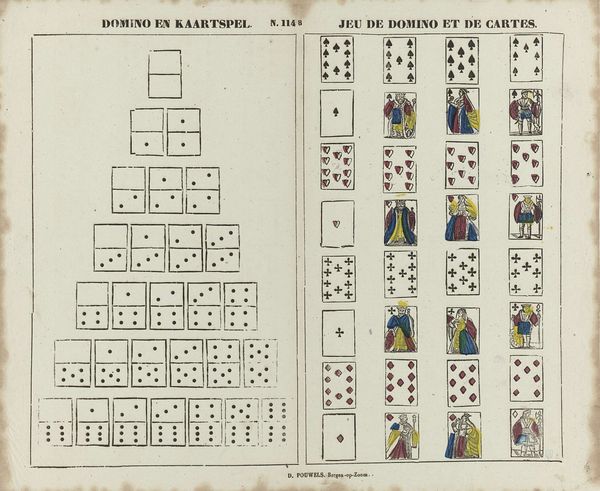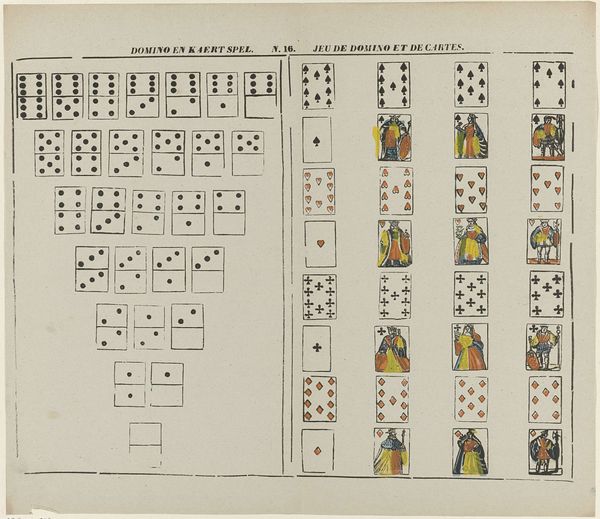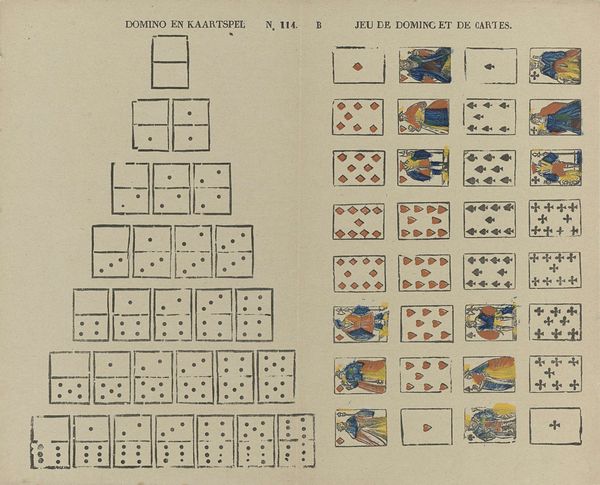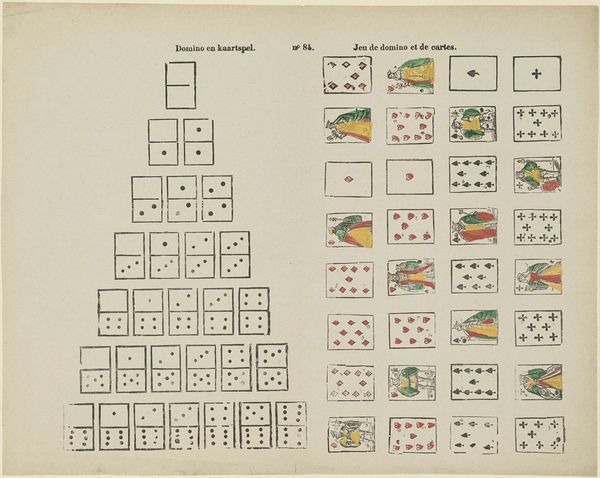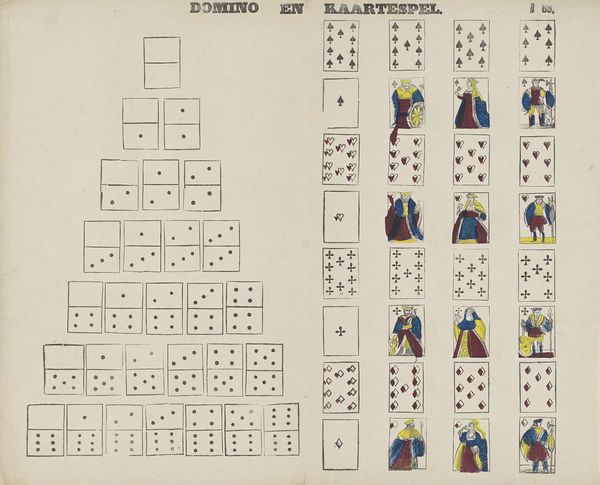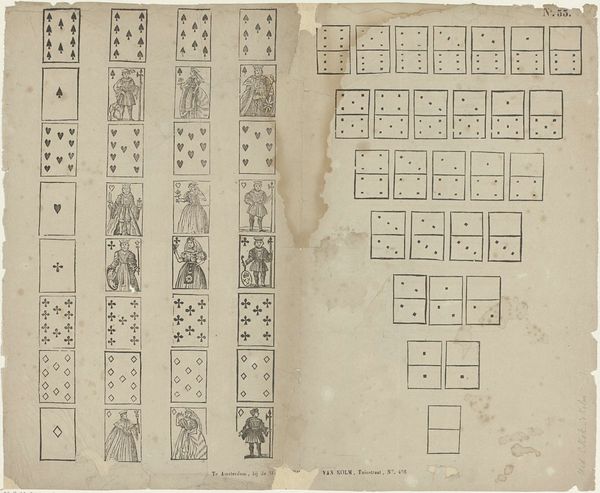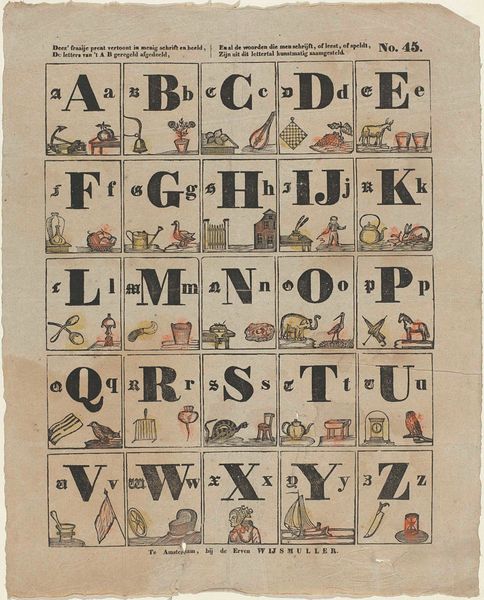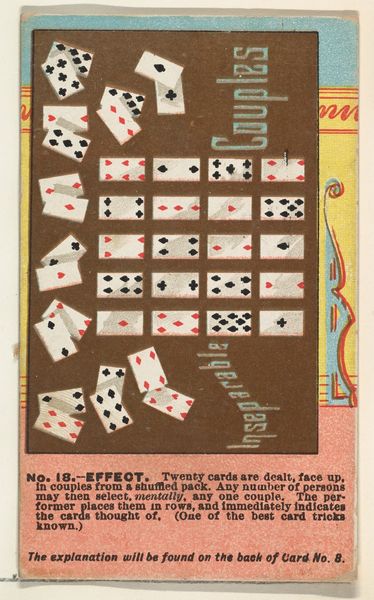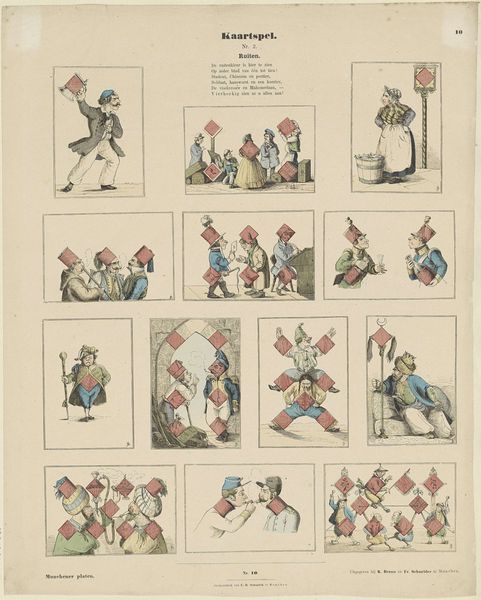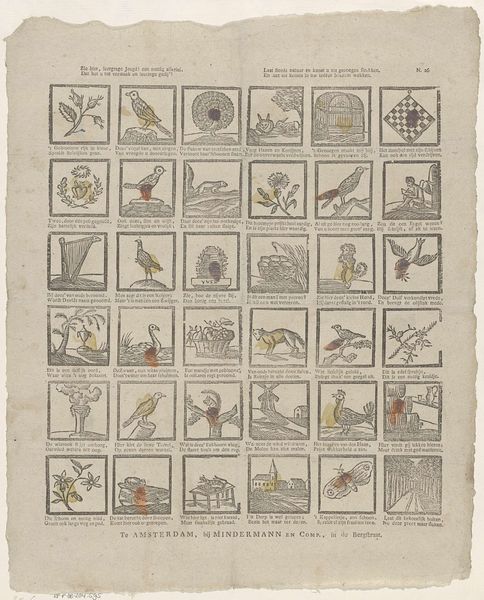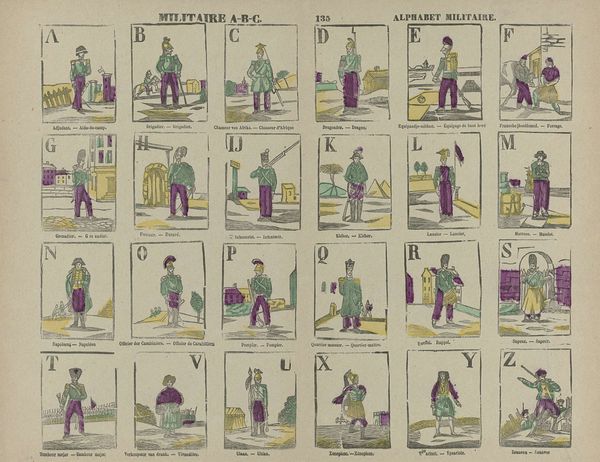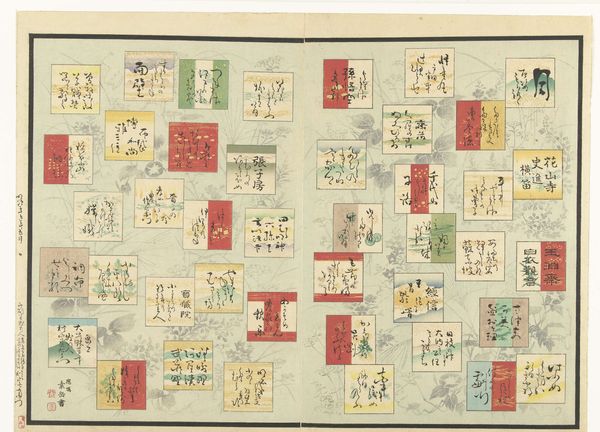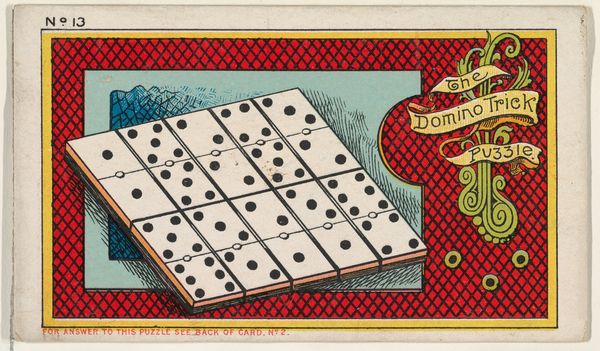
drawing, print, engraving
#
drawing
# print
#
genre-painting
#
academic-art
#
engraving
Dimensions: height 309 mm, width 382 mm
Copyright: Rijks Museum: Open Domain
Editor: This is "Jeu de cartes / Jeu de dominos," a print drawing, possibly an engraving, created sometime between 1827 and 1894, and it’s at the Rijksmuseum. It shows different arrangements of playing cards and dominoes in a grid-like layout. I find it strangely mesmerizing... What stories do you think are embedded in it? Curator: What I see are visual structures representative of leisure during a period of increasing industrialization. Who had the privilege to spend their time playing games? Whose labor funded this leisure? Think about the gendered aspects, too – were women as free as men to pass time with card games and dominoes in public? These were also games often played within the colonial structure. The material itself -- this reproducible print -- asks a question about the distribution of knowledge, and who had access. What do these visual languages – the cards and the dominoes – conceal, and what do they reveal? Editor: So you are suggesting it’s not just a record of pastimes, but speaks to the socioeconomic power dynamics and cultural context of that time? It’s making me consider who could even access leisure and entertainment back then. Curator: Exactly. And remember, academic art often reinforced societal norms and values. Are these images innocent representations or endorsements of particular social orders? What happens when these games leave the home? Where are they being played? Who's getting excluded from participating? It encourages us to confront how art reflects the world. Editor: This has definitely shifted my perspective. I was looking at it purely from a formal, almost nostalgic viewpoint. I now think it goes deeper and is asking some urgent social and cultural questions. Curator: Yes. It shows us that even seemingly simple depictions of everyday life are interwoven with the complex threads of power, class, and social history.
Comments
No comments
Be the first to comment and join the conversation on the ultimate creative platform.
